Palermo's Timeless Treasures Unveiled
Experience the rich history and vibrant culture of Palermo on this engaging free walking tour, exploring iconic landmarks and hidden gems throughout the city.
Time
3 Hours
Stops
9 Places
Distance
2.1 km
Porta Nuova
Begin your tour at Porta Nuova, a grand city gate built in the 16th century, symbolizing the power and prestige of Palermo.
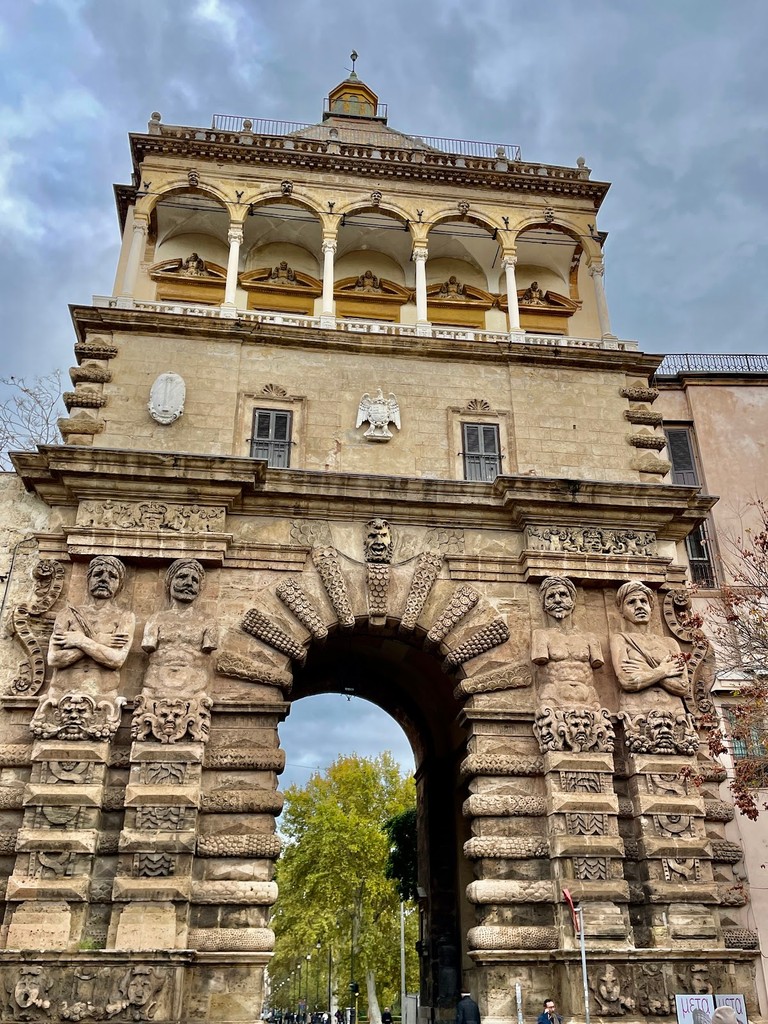
Porta Nuova (Source: Google Maps)
Porta Nuova is a monumental city gate that was constructed in the 16th century, reflecting the grandeur and power of Palermo during its prime. This impressive structure, with its ornate Baroque style, served as a crucial entry point into the city. The gate features intricate sculptures and inscriptions that celebrate Palermo's history and its significance in the Mediterranean. As you stand before Porta Nuova, imagine the countless travelers who passed through its arches over the centuries, each with their own stories and experiences. This landmark not only symbolizes the city's historical importance but also its architectural evolution, making it a must-see on your journey through Palermo.
Cappella Palatina
Located within the Palazzo dei Normanni, the Cappella Palatina is renowned for its stunning mosaics and is a masterpiece of Arab-Norman-Byzantine style.
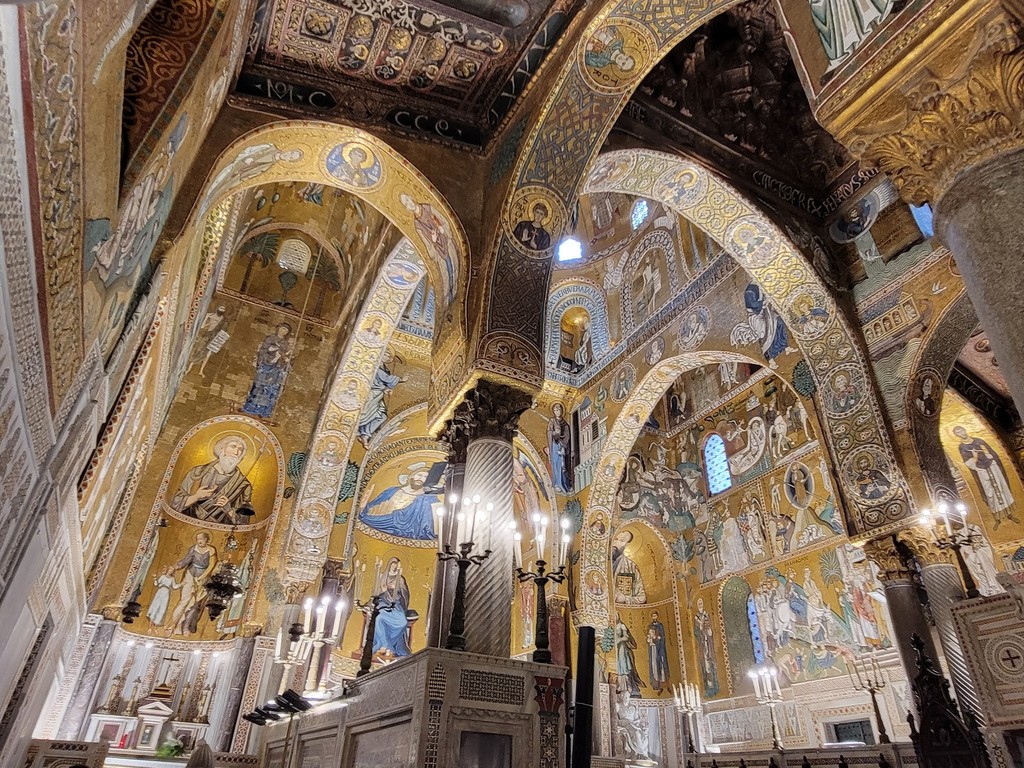
Cappella Palatina (Source: Google Maps)
The Cappella Palatina, located within the Palazzo dei Normanni, is a stunning chapel renowned for its breathtaking mosaics that illustrate the artistic collaboration of Arab, Norman, and Byzantine cultures. Built in the 12th century, this architectural masterpiece features a combination of Islamic motifs and Christian iconography, embodying the cultural fusion that characterized Sicily during the Norman rule. The golden mosaics, depicting biblical scenes and saints, shimmer in the natural light, creating a mesmerizing atmosphere. The chapel's wooden ceiling, intricately carved and adorned with geometric patterns, further highlights the exquisite craftsmanship of the period. Visiting the Cappella Palatina offers a unique glimpse into Sicily's rich history and the artistic achievements of its diverse influences.
Palazzo dei Normanni (Palace of the Normans)
Just a short walk from Porta Nuova, explore the majestic Palazzo dei Normanni, one of the most impressive examples of Norman architecture in Sicily.
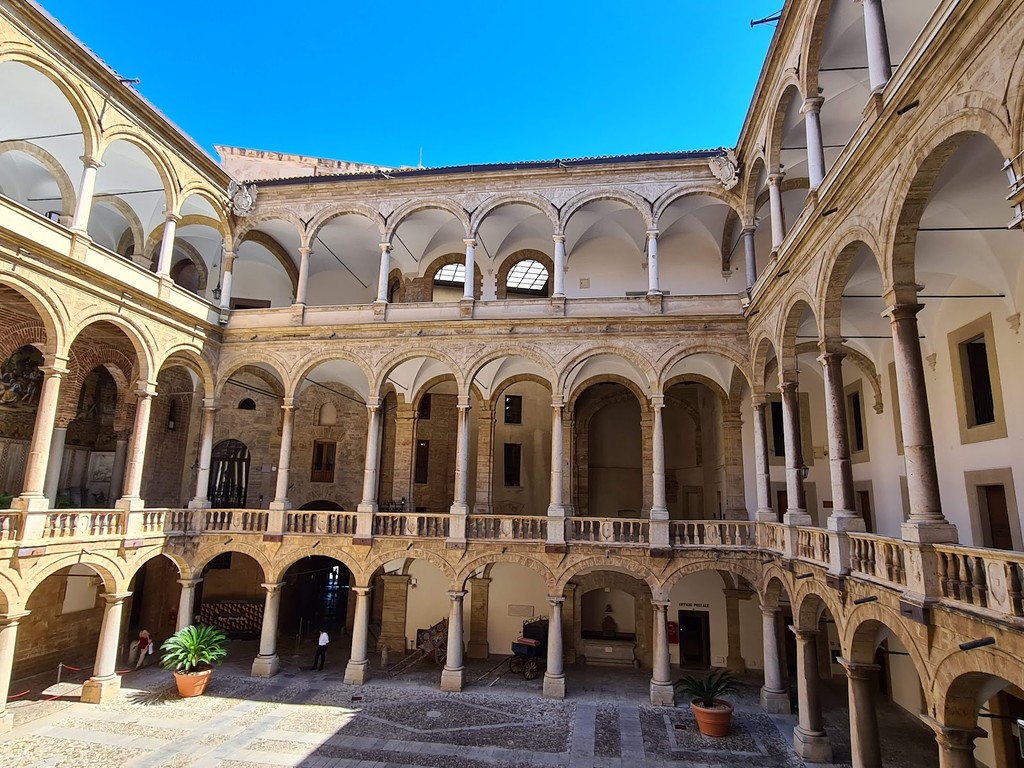
Palazzo dei Normanni (Palace of the Normans) (Source: Google Maps)
The Palazzo dei Normanni, or Palace of the Normans, stands as one of Sicily's most significant historical and architectural landmarks. Originally constructed in the 9th century as a fortress, it became the royal residence for the Norman kings of Sicily in the 11th century. The palace showcases a blend of architectural styles, including Norman, Arab, and Byzantine influences, reflecting the island's diverse cultural heritage. The grand halls and intricate decorations within the palace evoke a sense of the opulence enjoyed by its former royal inhabitants. The site also houses the Sicilian Regional Assembly today, making it a vibrant part of the city's political life. Exploring the Palazzo dei Normanni provides insight into Sicily's royal past and its role as a melting pot of cultures.
San Giovanni degli Eremiti
A brief walk from the palace, visit San Giovanni degli Eremiti, a church known for its unique red domes and tranquil gardens, reflecting Palermo’s Arab past.
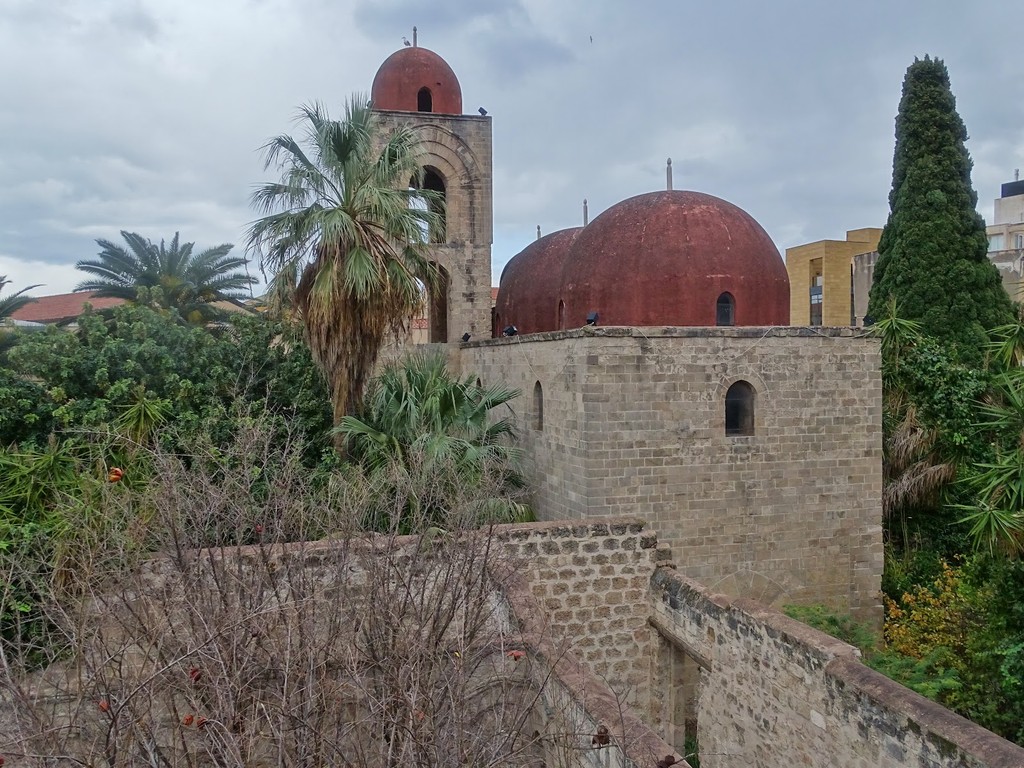
San Giovanni degli Eremiti (Source: Google Maps)
San Giovanni degli Eremiti is a unique church known for its striking red domes and serene gardens that echo the influence of Palermo's Arab heritage. Built in the 12th century, this church was originally a Benedictine monastery and serves as a testament to the architectural style that emerged during the Norman period. The church's design incorporates elements of Islamic architecture, evident in the arches and the harmonious layout of the surrounding gardens. Visitors are often enchanted by the tranquil atmosphere, making it a perfect spot for reflection. The red domes, symbolizing the church's distinct identity, rise majestically against the backdrop of Palermo's skyline. San Giovanni degli Eremiti not only showcases the beauty of cross-cultural influences but also offers a glimpse into the spiritual life of the city throughout its history.
Cattedrale di Palermo (Palermo Cathedral)
Continue your journey to the Cattedrale di Palermo, an architectural marvel that showcases a mix of Gothic, Norman, and Baroque styles.
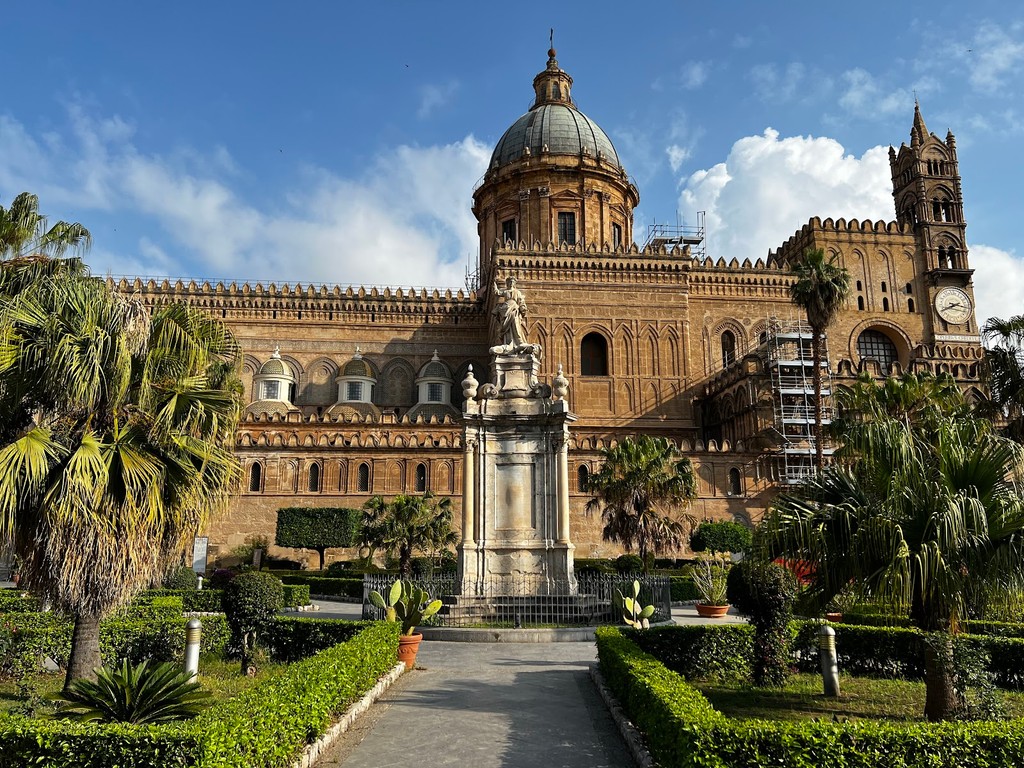
Cattedrale di Palermo (Palermo Cathedral) (Source: Google Maps)
The Cattedrale di Palermo, an architectural marvel, is a testament to the city's rich historical tapestry. Constructed between the 12th and 18th centuries, the cathedral features a stunning mix of Gothic, Norman, and Baroque styles, illustrating the evolution of architectural trends over the centuries. Its facade, adorned with intricate sculptures and elaborate details, captures the attention of every visitor. Inside, the cathedral houses a wealth of artistic treasures, including ornate chapels and stunning altarpieces. A notable feature is the royal tomb of Frederick II, one of Sicily's most famous kings, who played a crucial role in the island's history. The cathedral's impressive bell tower offers a panoramic view of Palermo, making it a must-visit landmark that encapsulates the city's religious and cultural significance.
Quattro Canti
Stroll to Quattro Canti, the heart of Palermo's historic center, where four Baroque buildings meet at a grand intersection, each representing a season and Spanish king.
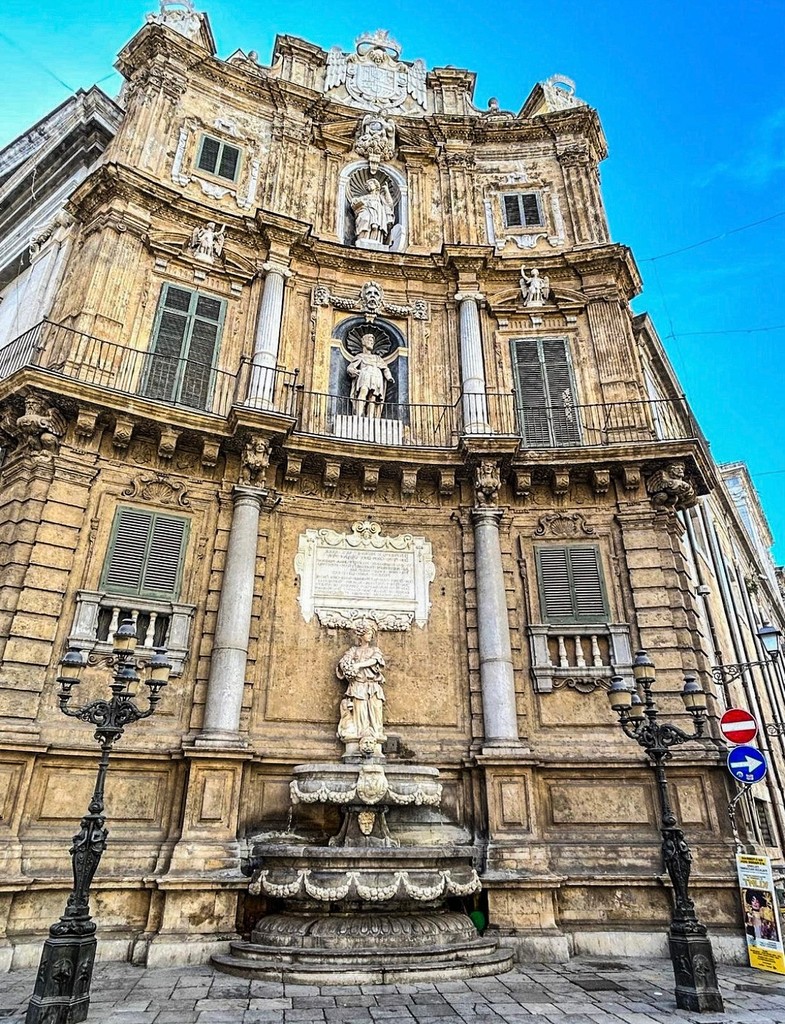
Quattro Canti (Source: Google Maps)
Quattro Canti, also known as Piazza Vigliena, is the vibrant heart of Palermo's historic center. This Baroque square, completed in the early 17th century, features four grand buildings, each representing a season and a Spanish king, creating a harmonious architectural ensemble. The square serves as a focal point for both locals and tourists, bustling with life and activity. The intricate facades of the buildings are adorned with statues and elaborate decorations, showcasing the skill of the artists of the time. Quattro Canti is not only an architectural wonder but also a cultural hub, where festivals and public events often take place. Its central location makes it an ideal starting point for exploring the surrounding streets filled with history, shops, and eateries, embodying the essence of Palermo's lively atmosphere.
Fontana Pretoria
Just a short distance from Quattro Canti, admire the Fontana Pretoria, a stunning fountain known for its intricate sculptures and historical significance.
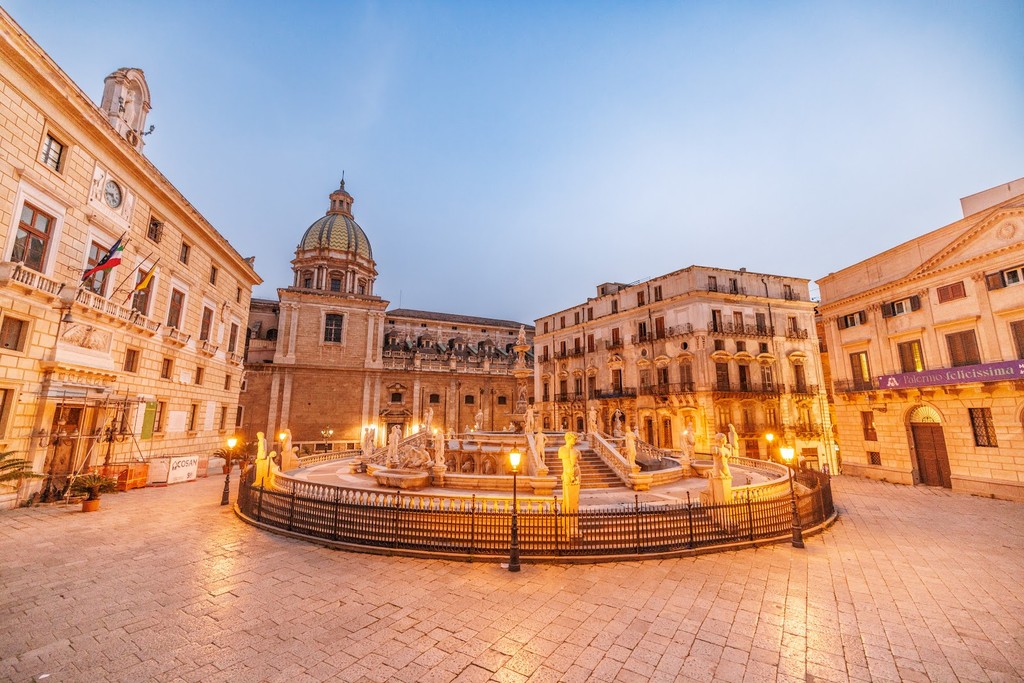
Fontana Pretoria (Source: Google Maps)
The Fontana Pretoria, also known as the Fountain of Shame, is a stunning example of Renaissance art, located in the heart of Palermo. Completed in 1581, this elaborate fountain is adorned with numerous statues and intricate carvings, showcasing the artistic prowess of its creators. Originally designed for the city of Florence, it was relocated to Palermo, where it became a symbol of the city's artistic heritage. The fountain features a central basin surrounded by figures representing various allegorical themes, including virtues and mythological characters. The dramatic water display, combined with the detailed sculptures, creates a visually captivating experience. Over the years, the Fontana Pretoria has become a beloved landmark, attracting visitors who marvel at its beauty and historical significance, making it a key stop on any exploration of Palermo.
Chiesa di Santa Maria dell'Ammiraglio (La Martorana)
Visit La Martorana, a church famous for its beautiful mosaics and a perfect example of Byzantine art in Palermo.
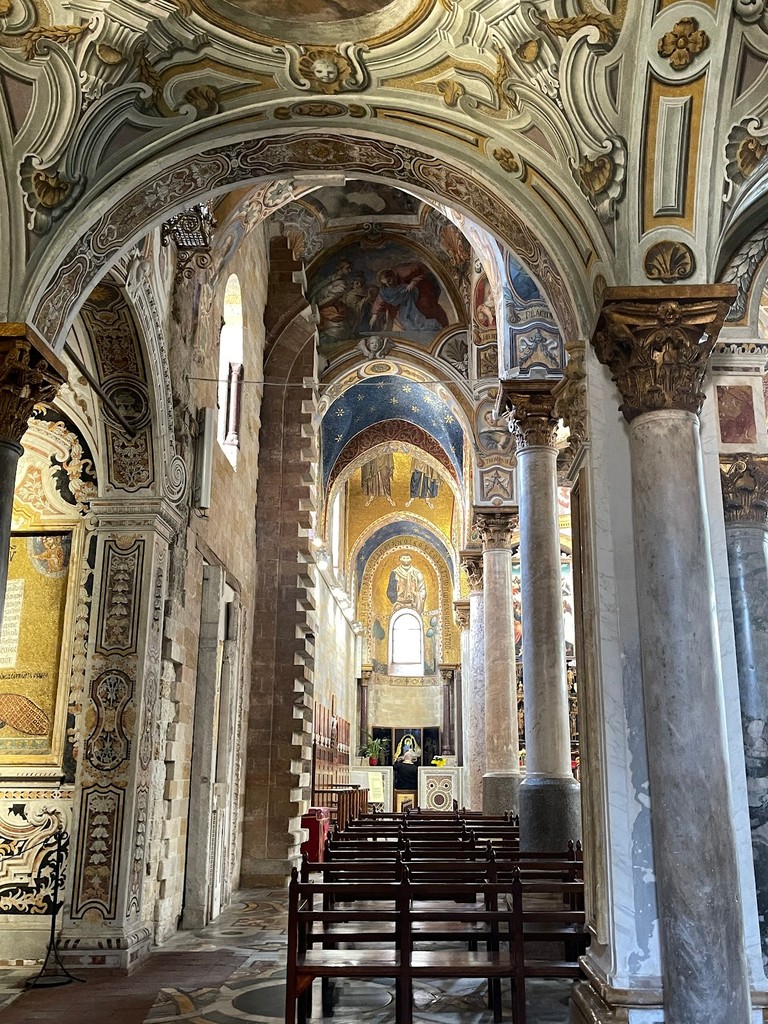
Chiesa di Santa Maria dell'Ammiraglio (La Martorana) (Source: Google Maps)
Chiesa di Santa Maria dell'Ammiraglio, commonly known as La Martorana, is a remarkable church that exemplifies the rich artistic heritage of Palermo. Built in the 12th century, it features stunning Byzantine mosaics that are among the finest in Sicily. The church's interior is adorned with intricate gold mosaics depicting biblical scenes, saints, and angels, creating a mesmerizing effect that captivates visitors. The architecture reflects a blend of styles, including Norman and Arab influences, showcasing the diverse cultural history of the island. La Martorana was originally founded by the admiral George of Antioch and has served various religious purposes over the centuries. Today, it stands as a testament to Palermo's historical significance and artistic achievements, making it a must-visit site for anyone interested in the city's rich heritage.
Piazza Bellini
Conclude your tour at Piazza Bellini, a lively square surrounded by historical buildings, offering a perfect spot to relax and reflect on the day's explorations.
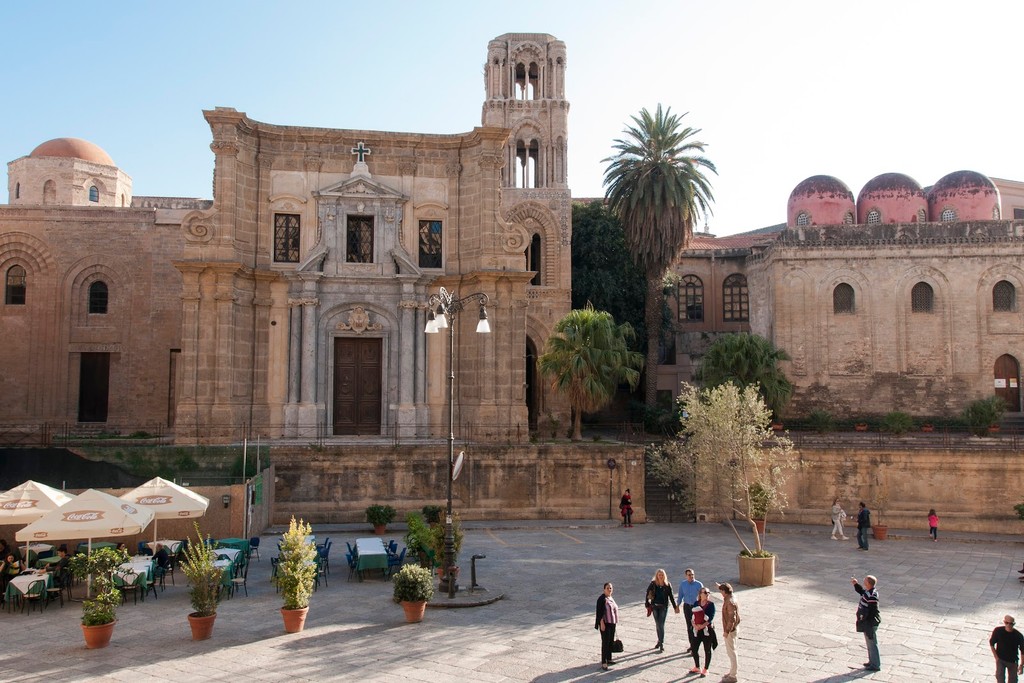
Piazza Bellini (Source: Google Maps)
Piazza Bellini is a lively square that encapsulates the charm and history of Palermo. Surrounded by historical buildings and vibrant cafes, it serves as a popular gathering spot for locals and tourists alike. The square's atmosphere is enriched by its picturesque surroundings, including notable churches and architectural landmarks that reflect the city’s diverse heritage. It's a perfect place to unwind and enjoy the sights and sounds of Palermo. The lively ambiance is further enhanced during festivals and public events, where the square becomes a hub of activity. Visitors can relax at one of the outdoor cafes, soaking in the vibrant culture and history while reflecting on the day’s explorations. Piazza Bellini stands as a testament to Palermo's dynamic spirit, making it an essential stop on your journey through this captivating city.

Your travels, your rules.
Create your own Free Walking Tours.
Set your preferences, distances and anything you want to do or see.
Completely free, no payment required.